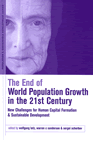 |
|
| |
|
The Dynamics of Global Population Aging
 “While the 20th
century was the century of population growth … the 21st century … is likely to become the
century of population aging”
“While the 20th
century was the century of population growth … the 21st century … is likely to become the
century of population aging”
There is no doubt that global population aging will be one of the “megatrends” of the coming century. While significant research efforts have recently been initiated on the health aspects and on the social and economic consequences of aging, no research organization has so far given the dynamics of aging in different parts of the world (including the uncertainties involved) systematic and explicit scientific consideration. For example, the UN does not consider mortality uncertainty in its projections, making them entirely inappropriate for the analysis of dependency ratios. Based on its probabilistic population forecasts, IIASA has a competitive advantage for establishing a position of global leadership in the analysis of the dynamics of possible and likely population aging in different parts of the world.
Substantively, the Dynamics of Global Population Aging Project will focus primarily on the demographic processes that lead to different paths of aging in different world regions and countries, and estimate the uncertainties involved in these assessments.
Unlike the previous IIASA population projections that were carried out at the level of major world regions, this work will also focus on the national and even sub-national level (for selected large countries). It will include a more thorough substantive analysis of the components of change in longevity (such as cause of death profiles), correlations of trends in different countries (and provinces within countries), and interactions with other demographic trends.
All studies concerned with the consequences of population aging will crucially depend on the future path of aging. For this reason the planned study of the aging dynamics and its uncertainties needs to be communicated to other study groups that investigate the possible economic, social, and health consequences of aging. POP plans to engage in active collaboration with such groups. In particular POP is currently establishing research collaboration with Harvard University (which holds a National Institute of Health grant on global aging) in addition to well-established collaboration in Europe and Asia.
Implementation
Since population projections tend to be very sensitive to starting conditions and trends in the very first years, this new set of projections will be able to reflect the trends of the past five years and are expected to show a number of significant differences from the 2001 projections. For the same reason the UN Population Division produces new projections every two years.
We plan to use a slightly improved version of the methodology of probabilistic population projections for all individual countries. This will produce the first set of global probabilistic projections at the country level.
It will also try to assemble all 137 relevant existing data on old age disability in order to be able to calculate disability-free life expectancy in addition to total life expectancy. This research will be carried out in close collaboration with POP’s regional partners in Europe, Asia, the Americas and Africa. It will also include a new round of soliciting and evaluating expert opinion about future demographic trends at the level of individual countries.
For Previous Global Population Projections, click here
Responsible for this page: Suchitra Subramanian
Last updated:
19 Sep 2011
Phone: (+43 2236) 807 0
Copyright © 2009-2011 IIASA